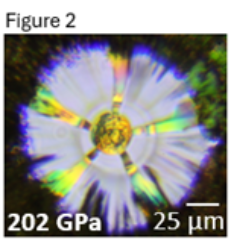Buhot group
Research Interests & Activities
Since 2011, my research interests have been focused on the study of strongly correlated electron systems (heavy fermions, unconventional superconductors) and hydride superconductors. I have characterised these systems using Raman spectroscopy and electrical transport techniques under the extreme conditions of low temperatures, high magnetic fields, and high pressures. From 2015 to 2019, I worked at the High Field Magnet Laboratory (Nijmegen, NL) as a Research Associate and Support Scientist. There, I upgraded the Raman facility to enable the detection of low energy excitations (<1meV), at low temperatures (1.4K), in high magnetic fields (up to 30T) and megabar pressures (up to 230 GPa). Between September 2019 and June 2024, I worked as a Senior Research Associate in the team of Dr Sven Friedemann at the University of Bristol. We have reproduced the synthesis of H3S (independently from Eremets’ group), and we have established experimentally the presence of superconductivity in La4H23. Since December 2024, I am leading my own research team, as an EPSRC Research Fellow, and our research focuses on understanding the microscopic mechanisms responsible for near room temperature superconductivity in hydride superconductors.
Towards superconductivity at ambient conditions
Hydride superconductors are a new class of “conventional” superconductors that exhibit superconductivity near room temperature and offer the prospect of finding superconductivity at room temperature (cf. Fig. 1). However, their synthesis requires very high pressures (1-2 million atmospheres) which are realised by mounting very small samples (20µm) in diamond anvil cells (DAC). Measuring their structural and electronic properties in a DAC is therefore experimentally challenging. Fig. 2 shows an example of sample contacted with five electrodes in a DAC at 2 million atmospheres. To build such a device, we use thin-film deposition techniques. The current challenge in this field of research is to discover new hydride superconductors with optimised properties: room temperature superconductivity at lower pressure and ideally at ambient conditions to unlock their potential for applications. In order to achieve such ambition, we need to understand which key parameters are responsible for high-Tc superconductivity in hydrides. In my team, we are currently developing spectroscopic techniques in a DAC to measure the superconducting gap of hydride superconductors as a function of pressure, magnetic field and temperature. These parameters are crucial to refine theoretical models and engineer superconductivity at ambient conditions.
This research is supported by the EPSRC (Project: EP/Z533555/1).


Current researchers and PhD students
Dr. Sam Cross
Senior Research Associate
